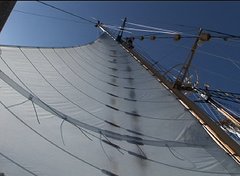 |
| Stanford@SEA 2015 on the steps of the Agassiz Building |
For the past five weeks, we have been hard at work at the
Hopkins Marine Station preparing for our impending ocean voyage. It’s hard to
believe that we are leaving the country in just a few days, considering that
our first day together really does feel like yesterday. Five weeks ago, we
arrived at Hopkins with our hearts pounding, full of excitement and occasional
moments of trepidation, knowing that we were meant to be here but not knowing
exactly what to expect. And one week from now, we will do what we have come
here to do: board our ship, the Robert C.
Seamans, and set off on an adventure that will stretch us so far past our
limits that we will likely see the world, and ourselves, a bit differently by
the end of it.
During our time
at Hopkins, we have been taking three different classes to prepare for our
voyage:
- Maritime Studies – We discussed the relationship between humans and
the ocean, starting with European exploration and going through modern
regulation and decision-making. It was especially interesting to learn
about the history of European and American involvement in the Pacific, and
the impact that this trade and exploration had on the environment and the
native population.
- Oceanography – We learned about
the biology, geology, chemistry, and physics of the ocean, from tuna
physiology to ocean circulation. We also developed research projects that
we will conduct on the ship.
- Nautical Science – We gained the practical skills we will need to be crew
members of the ship, including navigation, safety, sail theory, and
weather observations. We got to use all sorts of neat things like sextants
and plotting tools that were invented centuries ago, and still remain
extremely accurate and useful today.
Something truly remarkable about this trip is how truly
diverse our group is. We have historians, economists, biologists, earth
scientists, communicators, engineers, environmental scientists, computer
programmers, geologists, and everything in between. It’s certainly reminded me
how important the ocean is, and how much anyone of any background can learn
from it. As ocean explorer and advocate Sylvia Earle once said, “No water, no
life. No blue, no green.” We all need the ocean as our planet’s life support
system, and what a treat to be spending the next five weeks of our lives living
on the ocean and learning more about it.
It takes a special type of person to go on a voyage like
this. None of us will sleep for more than four or five hours at a time, and we
will all be responsible for keeping the ship – and each other – safe. We’ll be
relying on each other to steer the ship in the right direction, to get enough
food on the table to feed all 40 crewmembers, and to tell us (discretely) when
we’ve worn the same shirt too many days in a row. And as a reward, we will see
and experience things that most people never will. What an opportunity – and
what a journey – we are about to undertake.
Our next blog post will appear in about a week, as it will
take a few days to transport ourselves, our carefully selected belongings, and
our scientific equipment to Tahiti to meet the Robert C. Seamans. I can’t wait to start this incredible adventure,
and hope you enjoy following our journey in the next few weeks!
- Emma Hutchinson


No comments:
Post a Comment